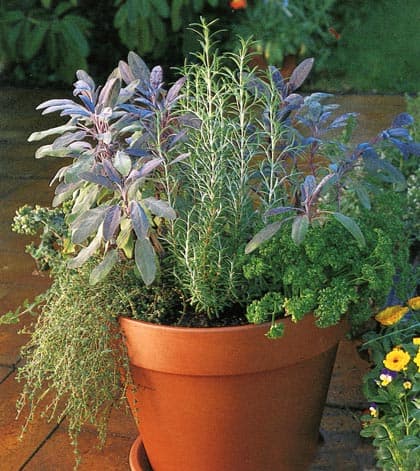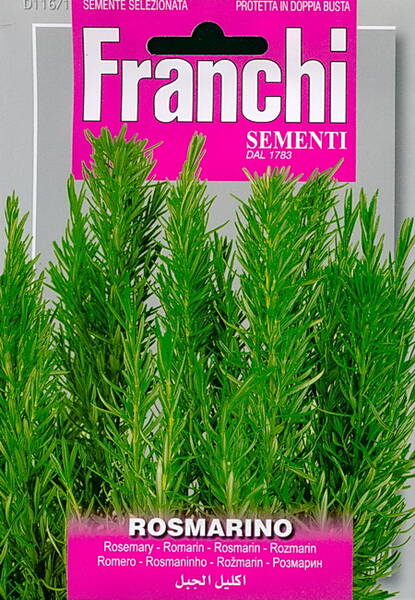An evergreen, densely leafy shrub 0.5-1.5 m high. The leaves are linear, opposite, sessile, leathery, 1.5-3.5 cm long and 0.2-0.4 cm wide, with downward-curved edges. The flowers are small, collected in dense paniculate inflorescences, color from dark purple to white.
Rosemary is drought-resistant, demanding of light and sensitive to frost. Prefers dry, calcareous, permeable soils with good aeration. It also grows well on dry sandy and gravelly soils. Does not tolerate excessive moisture. Resistant to diseases and pests.
Propagated by seeds, cuttings, dividing the bush and layering.
Areas on the southern slopes are allocated for rosemary. Plants are planted in autumn or early spring with a feeding area of 1.5 x 1 m. Sowing in the ground in May-June. 1.0 g = 550-750 seeds.
Caring for plants involves timely loosening, removing weeds and applying nitrogen and phosphorus fertilizers. The harvest is harvested in July–August.
An infusion of the plant is used for headaches, colds, and gastrointestinal diseases, as a diuretic.
Rosemary has a sweetish, slightly camphorous aroma, reminiscent of pine, and a spicy, bitterish-pungent taste. Rosemary is added in small quantities to fruit salads. It goes well with beans, peas, eggplants, white cabbage, red cabbage and cauliflower. But mostly it is added to hot dishes of meat and poultry. Rosemary is added to tea.

Rosemary, dew of the sea. Pharm.: folia anthos, folia roris marini.
* Rosemary is an essential oil plant popular since ancient times, an evergreen Mediterranean shrub. Its name goes back to the Latin “ros marinus” (sea dew) and was not given to it by chance: rosemary grows on the seashore, in the spray of sea foam...
That is why the ancient Greeks and Romans dedicated it to the foam-born Aphrodite (Venus) and truly believed that this wonderful plant could make a person happy, save him from evil dreams and preserve youth.
Rosemary has long been a favorite spice in Mediterranean countries. In regions with warm climates, rosemary grows in open ground in one place for up to 20 years, reaching a height of 2 meters. Tall rosemary bushes are often grown in hedges, and creeping forms are often grown on an alpine hill.
Rosemary leaves are harvested for medicinal purposes.
Essential oil, alkaloids, and acids were found in the leaves. An aqueous infusion of rosemary has tonic, anti-inflammatory, astringent, choleretic, and analgesic properties.
In folk medicine, an aqueous infusion is taken orally for delayed menstruation, menopausal neuroses, cholecystitis, gastrointestinal disorders, externally for difficult-to-heal wounds, boils, and for douching for leucorrhoea. For baths and compresses for neuritis and colds, for gargling for sore throats and stomatitis.
Poultices from young shoots are effective as an external remedy.
• 2 teaspoons of crushed dry rosemary leaves per 1 cup of boiling water, leave for 1-2 hours, strain.
Take 1/4 cup 4 times a day before meals for bronchitis. The same infusion can be used externally for compresses and gargling and mouthwash, for vaginal douching.
• 2-3 tbsp. Scald spoons of young stems with leaves with boiling water and wrap in gauze. Use hot pads as pain-relieving poultices.
Attention!
Rosemary is contraindicated in pregnant women because it has an abortifacient effect. It is also not recommended for patients with hypertension, as it increases blood pressure and people prone to seizures. If the oil of this plant gets on the skin, a burning effect and even a feeling of dizziness are very likely to occur (this applies to people with hypersensitive skin).












